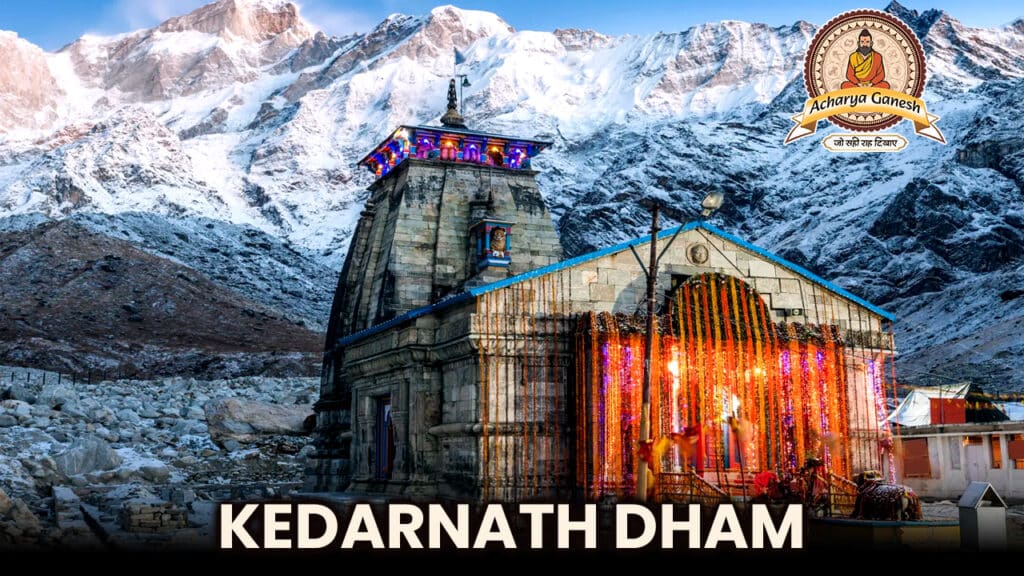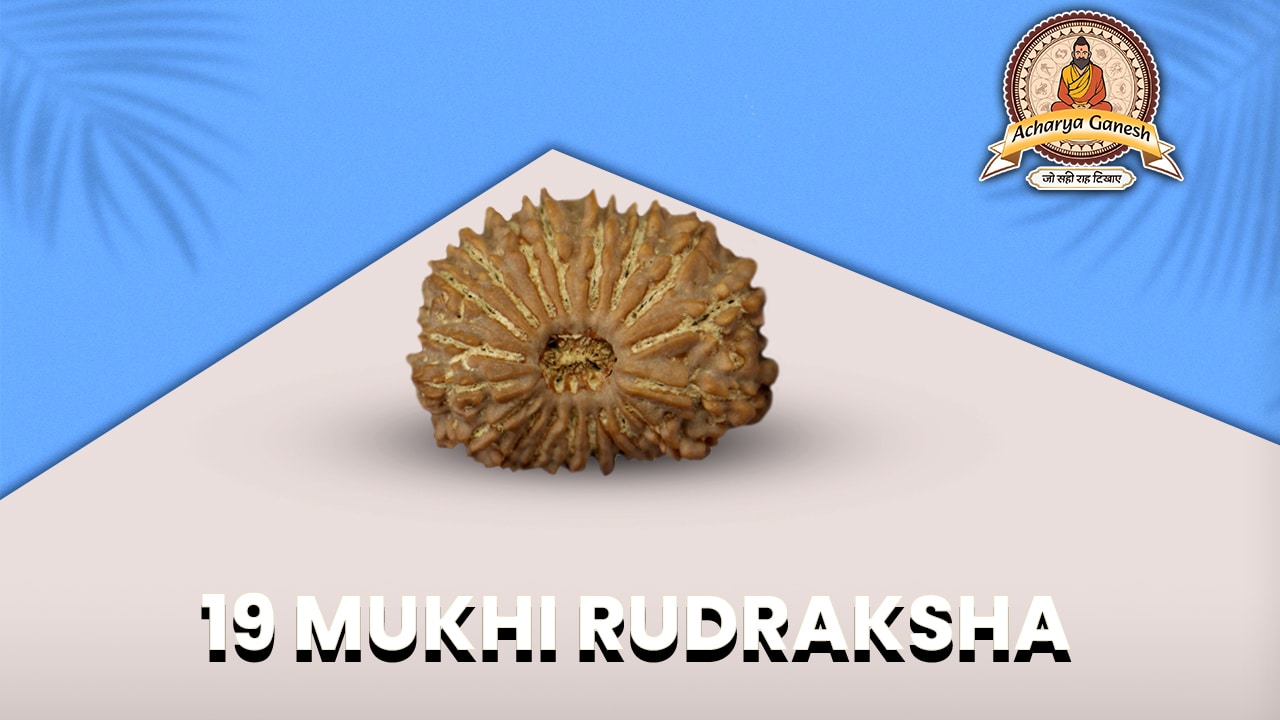Table of Contents
ToggleIntroduction: The Essence of Kedarnath Dham
Kedarnath Dham/Kedarnath Temple, one of the centers of the Chota Char Dham pilgrimage is nestled in the serene and peaceful environment of the mighty Himalayas.
Kedarnath’s importance is due to its association with Pandavas. As per Mythology, the Kedarnath Dham/Kedarnath temple or the Kedarnath Uttarakhand is associated with Pandavas final journey to heaven.
Kedarnath Temple, Kedarnath Uttarakhand, Kedarnath Dham, or the Kedarnath importance can be realized by the fact that it is one of the Char Dham India. The mythological legend of the Char Dham India is related to Bhima recognizing Shiva who was moving in the form of a bull in the region.
Perturbed by the mayhem at Kurukshetra, Mahabharat, Lord Shiva was persistently avoiding meeting Pandavas, who desperately wanted to worship Him and atone for his sins and seek salvation.
Bhima caught hold of the Bull by neck and tail. And the Shiva in the form of body parts appeared at 5 places called Panch Kedar. The Pandavas built the Panch(5) Kedar Temples, viz. The Kedarnath Uttarakhand, where the hump of the bull representing Shiva appeared; the arms appeared in Tungnath; the face appeared at Rudranath; the nabhi or navel and belly appeared at Madhyameshwar; and hair appeared in Kalpeshwar.
Pandavas performed Yagya, a fire sacrifice at Kedarnath Dham/Kedarnath Temple for salvation and moved on their onward journey to heaven.
Uttarakhand’s spiritual landscape, enroute Kedarnath spiritual journey beginning from Haridwar, Rishikesh is immersed in spirituality. Onward hilly journey to Kedarnath Uttarakhand, & Badrinath Dham, all along the sacred places like Devprayag, Rudraprayag Karnaprayag Sonprayag & Guptkashi is not only picturesque but also is a source of solace.
Kedarnath importance is further enhanced as near the Kedarnath Uttarakhand, the holy river Mandakini originates from the Kedar peak. In the sacred land of the Himalayas the Rivers Bhagirathi, Alaknanda, Mandakini & Ganga are revered along the Kedarnath pilgrimage.
Kedarnath Overview:
As far as Kedarnath overview is concerned, Kedarnath Uttarakhand is nestled in the Himalayas at a height of approximately 3584 meters. The sacred River Mandakini meanders its way through the region. Kedarnath pilgrimage is the most sought after as it is one of the 12 Jyotirlingas in India.
Kedarnath’s Sacred Location

Kedarnath location is very picturesque, nestled in the green Himalayas in the peaceful district of Rudraprayag. In fact Kedarnath in Char Dham, is located at about 86 km from Rudraprayag. Kedarnath’s spiritual location brims up with religious fervor and gaiety for it is the source of the holy river Mandakini.
Owing to incessant flow of River Mandakini, Kedarnath Himalayas play a pivotal role in boosting the economy of Spiritual Location Kedarnath and, therefore, it is of great importance to the local people.
Kedarnath importance in Uttarakhand can be understood by the fact that it lures the trekkers as Kedarnath pilgrimage involves a Kedarnath trek stretch of about 16 km from Gaurikund.
Kedarnath geographical setting is apt to provide an ideal atmosphere for meditation. People consider Kedarnath Uttarakhand as Kedarnath Spiritual Location where they can peacefully meditate and connect themselves spiritually. Kedarnath, located in the serene Himalayas, provides a beautiful tourist destination.
Kedarnath geographical setting provides rendezvous with intermittent sound emanating from the surging streams and the melodious chirping of birds in the woods. Kedarnath Himalayas, offering a conducive atmosphere to find solace, is the most sought after Spiritual location Kedarnath or the Kedarnath in Char Dham. Kedarnath importance in Uttarakhand can not be measured as, it is, basically a Spiritual Location Kedarnath.
Historical and Mythological Background
Kedarnath Jyotirlinga Story or the Legend of Kedarnath Temple:
Historical and mythological background of Kedarnath Char Dham revolves around its connection between Pandavas and Kedarnath Temple.
Kedarnath Temple History:
According to the Kedarnath Temple History, Kedarnath History or Kedarnath Myths or Kedarnath Legends or Kedarnath Mythology or in whatever way you refer, the Kedarnath Legend has it that Pandavas, after defeating Kauravas, were shrouded with conscience of guilt, owing to so many killings in the battle-field of Kurukshetra, the Mahabharata.
The historical significance of Kedarnath temple lies in the fact that the Kedarnath legends say that Lord Shiva eluded Pandavas for large-scale casualties in Mahabharat and took refuge at Kedarnath in the form of a Bull.
As per Kedarnath Myths, on being recognized by Bhim, Shiva dived into the ground, leaving his hump at the surface. As per the Kedarnath myths, His arms appeared at Tungnath, the face at Rudranath, the belly at Madmaheshwar and His locks(hair) at Kalpeshwar.
The historical significance of Kedarnath Dham/Kedarnath Temple is that Pandavas, in order to seek redemption, built the Kedarnath Dham/Kedarnath Temple. Kedarnath design can be appreciated by looking at the Panch Kedar temples. The temples of Tungnath and Madhyameshwar are also built in Kedarnath design.
A sort of replica of the Kedarnath temple structure and copy of the Kedarnath temple design, in the Kedarnath Temple architecture is seen at Tungnath and Madhyameshwar too.
Owing to the historical significance of Kedarnath Dham/Kedarnath Temple, every year millions of devotees visit the Kedarnath temple which constitutes Uttarakhand Char Dham Yatra.
Temple Architecture and Features
Kedarnath Temple Inside:
The Kedarnath Temple Architecture is in typical Kedarnath Architectural Style which is called Middle Himadri Kyuri style. The Kedarnath Temple Design and Kedarnath Architectural style is simple but magnificent. Kedarnath temple inside or the Kedarnath Temple features include the three chambers- Garbhagriha, the sanctorum, the Darshan Mandap for worshiping, and the Sabha Mandap for assembly of pilgrims.
Kedarnath temple inside has the idols of many deities. The Kedarnath Temple design includes the mandap walls which exhibit the famous Kedarnath Art in the form of idols of deities- Ganesh, Riddhi, Siddhi, Parvati, Vishnu, Lakshmi, Krishna, and Pandavas Kunti, Droupadi, Yudisthir, Bhim, Arjun, Nakul and Sahdev.
Kedarnath temple’s historical influences have a deep impact on the pilgrims as the halls depict legends connected with Pandavas. There are statues of 5 Pandava brothers- Yudhisther, Bhim, Arjun, Nakul and Sahdev.
The Kedarnath temple features or the Kedarnath Temple structure can be observed by appreciating the grandiose and grandeur of the idols of Gods and Goddesses including the idols of Lord Krishna & idols of Draupadi and other deities.
A glimpse of the grandeur of the Kedarnath Temple structure or of the Kedarnath Temple Architecture can be had at the entrance itself, where the statue of Nandi bull allures the pilgrims. The Kedarnath Temple Architecture leaves great Kedarnath Temple Historical Influences on the pilgrims.
Pilgrimage Experience
Kedarnath Temple’s Distance From Rishikesh:
Kedarnath Journey from Rishikesh is approximately 223 km(139 miles) long. From Rudryaprag, the sacred place of the confluence of Mandakini and Alaknanda rivers, one usually covers a road distance of about 76 km for the Kedarnath journey of about 2 hours.
Enroute their Kedarnath Spiritual journey from Rudraprayag to Kedarnath, devotees pass through picturesque Sonprayag and Gaurikund. The Kedarnath trek route is about 16 km from Gaurikund to Shiva Kedarnath Temple. At Kedarnath Temple Kedarnath Uttarakhand, the devotees can perform Abhishek puja and Archana.
While hiking on the Kedarnath trek, the pilgrims must derive advantage from the Kedarnath Travel Tips while undertaking Kedarnath Spiritual Journey. They must keep Glucose, lemons, and water with them. Hiking on the Kedarnath trek is enjoyable in groups and after a successful trip, they share with friends their Kedarnath experience gladly. Pilgrims who pay heed to Kedarnath Travel tips have a wonderful Kedarnath experience.
Kedarnath Yatra: Panch Kedar pilgrimage circuit:
Kedarnath and the four pilgrim sites viz. Tungnath, Rudranath, Madmaheshwar, and Kalpeshwar together make the Panch Kedar pilgrimage circuit. Pilgrims are also aware that both the Kedarnath Temple and Badrinath Temple are believed to be established by Aadi Guru Shankaracharya.
Astrological Insights and Vastu Considerations:
Char Dham Circuit yatra Uttarakhand includes Kedarnath Uttarakhand, Badrinath Dham, and the holy Gangotri and Yamunotri, the origin places of Ganga and Yamuna respectively.
Best Time To Visit Kedarnath:
The best time to visit Kedarnath Temple is the time when darshan to Kedarnath Temple is opened for devotees in April(Akshaya Tritiya) & November (Kartik Purnima).
Kedarnath Astrological benefits
As far as the Astrological Influence of Kedarnath is concerned, according to Shiv Mahapuran, Lord Shiva emerged in the form of a column of light on the 14th night, Krishna Paksh of Phalgun Maas.
For determining the Astrological Influence of Kedarnath, the date of emergence of the column of Light or Shiva is of prime importance. Thus, Mahashivratri is celebrated on the 14th night of Krishna Paksh, Phalgun month.
For deriving Kedarnath Astrological benefits, pilgrims belonging to the Leo zodiac sign must visit Kedarnath Dham/ Kedarnath Temple and offer Dhatura and Lotus flowers.
Vastu and Kedarnath are deeply associated. The nine stairs/steps, which according to some are symbolic of 9 planets, need not to be expanded and the original Vastu and Kedarnath be left untouched.
Vastu and Kedarnath, Astrological Influence of Kedarnath and Vastu Impact of Kedarnath Temple can be appreciated from the fact that it remained intact in the 2013 deluge. Vastu impact of Kedarnath temple is a subject of research for students of Vastushastra.
Cultural and Spiritual Integration
The residents of Kedarnath Uttarakhand remain immersed in devotion to Lord Shiva. Kedarnath Dham has been a perpetual source of cultural and spiritual integration. Sages have been instrumental in bringing Cultural and spiritual integration to Kedarnath. Adi Sankaracharya’s contribution to bringing cultural and spiritual integration has been tremendous.
The adage -When the going gets tough, the tough get going is apt for the local people of Kedarnath.
One can get a clue about the Kedarnath Cultural significance from the fact that in the winter season when the temples are inaccessible owing to snowfall, spiritual practices and worship continue to go on through symbolic or representational idols:- Kedartnath at Ukhimath, a sacred place at an approximate distance of 41 km from Kedarnath; Tungnath at Makkumath; Rudranath at Gopeshwar; and Madyameshwar also at Ukhimath. Kalpeshwar Temple is the one out of the Panch Kedar that remains open even in winter.
Kedarnath traditions, Kedarnath local culture, and spiritual practices associated with Kedarnath, ceaselessly go on despite heavy snowfall in winter.
Kedarnath local culture is primarily a Garhwali culture. Kedarnath cultural significance is experienced by tourists who enjoy the warm hospitality of the local people during their Kedarnath Spiritual journey.
Cultural connection in Kedarnath can be established by embarking on a walk. Stunning views of the Himalayas and the chirping of birds provide ample opportunities to relax and rejuvenate.
One can get a taste of Kedarnath local culture and traditions by interacting with local people and relishing local cuisine at the local Dhabas – Sarovar Portico Badrinath, Kedarnath Bhojnalaya and Sadnhiv Shakti Dhaba. Cultural Connection Kedarnath can be ensured by holding conversations with locals during your sojourn.
One can get a feel of Kedarnath Local Culture & Kedarnath Traditions while trekking trails of Vasuki Tal or Chorabari Tal.
Conclusion: Embracing the Full Significance of Kedarnath Dham
It is mentioned in the Kedarnath Summary that the Sacred Importance of Kedarnath can be understood by the fact that it is one of the Char Dham Yatra’s sacred places, part of the Panch Kedar Yatra and one of the 12 Jyotirlingas in India. Char Dham and Uttarakhand are synonymous in a way.
In Kedarnath summary, it is worthwhile to mention that the Kedarnath temple is built in the Middle Himadri style of architecture. The temple is an architectural marvel. The temple has a wooden ceiling. Nandi bull in stone adores the entrance gate of the Kedarnath Dham.
Being associated with the Pandava legends, the Kedarnath Uttarakhand is the most sought-after pilgrimage for undertaking a spiritual journey. The fact that millions of pilgrims visit Kedarnath Uttarakhand every year, is an indication of the sacred importance of Kedarnath.
As a Kedarnath Travel Guide, enroute Char Dham and Uttarakhand pilgrimage to Kedarnath, people come across the vibrant and picturesque places- Haridwar, Rishikesh, Devprayag, Srinagar, Rudraprayag, Gaurikund (via Agastyamuni, Guptakashi, Sonprayag, and Kedarnath.
Another important point that can be included in the Kedarnath Travel Guide are the temple Timings. The temple opens at 6 am to 2 pm and; from 5 pm to 8 pm.
Call to Action:
What are you waiting for? Pilgrims must undertake a spiritual journey with their friends and families that will facilitate them to mold spiritually and remain adhered to the righteous path.
Services: Astro Vastu | Astrology | Match Making | Career Prediction | Vastu
Astrology Courses: Astrology Foundation Course | Lal Kitab Advanced Course | Workshop on Vastu | Nakshatra Simplified Course
Zodiac Sign 2024 Horoscope: Cancer Horoscope 2024 | Gemini Horoscope 2024 | Taurus Horoscope 2024 | Aries Horoscope 2024 | Sagittarius Horoscope 2024 | Scorpio Horoscope 2024 | Libra Horoscope 2024 | Pisces Horoscope 2024| Aquarius Horoscope 2024 | Capricorn Horoscope 2024 | Virgo Horoscope 2024| Leo Horoscope 2024
FAQs Of Kedarnath Dham
Q.1. What is Kedarnath Dham and why is it important in the Char Dham circuit?
Ans. Kedarnath Dham, is one of the 12 Jyotirlingas and mythologically, it is associated with the final journey of Pandavas – Yudhisther, Bhim, Arjun, Sahdev, Nakul, and Droupadi. As per the Kedarnath myths, it is stated that a dog also accompanied them during their final journey to heaven. Owing to its historical significance, the Char Dham circuit yatra comprising Kedarnath Dham, Badrinath Dham, Gangotri and Yamunotri is considered sacred.
Q.2.Where is Kedarnath located and what makes its geographical setting special for pilgrims?
Ans.2. Kedarnath Temple is nestled in the mighty Himalayas at a height of approximately 3584 meters.(11755 ft.) The journey also involves trekking or hiking over a stretch of about 16 kms. The geographical setting involving strenuous trekking or hiking on the rugged terrain makes it special for pilgrims.
Q.3.What are the main legends and historical significance of Kedarnath Temple?,
Ans. The main legend associated with Kedarnath Dham/Kedarnath Temple is that it was built by Pandavas on their way to heaven.
Q.4. What are the key architectural features and design elements of Kedarnath Temple?
Ans.4 The Kedarnath Dham/Kedarnath Temple is built in Middle Himadri Katyuri style of Architecture in stone. The ceiling is wooden. At the entrance, there is an idol of Nandi Bull. The three chambers viz. Garbhgriha, the Darshan Mandap and the Assembly or Sabha Mandap are beautifully built in Kedarnath design.
Q.5. What should visitors know about the pilgrimage journey to Kedarnath, including travel tips and accommodations?
Ans.5. Pilgrims must carry eatables, glucose drinking water, and sufficient cash with them. Pilgrims may also visit Amrit Kund, Bhairon Nath temple nearby. Vasuki Tal or lake is in the backside of the temple, where the Brahma Kamal flowers bloom during August. Gauri Kund Shiva Parvati temple is also nearby. Pilgrims visit the Samadhi of Adi Shankaracharya, who left for heavenly abode at the young age of 32. Good hotels are available at a reasonable cost.
Q.6. How does visiting Kedarnath impact different zodiac signs, and when is the best time to visit based on astrology?
Ans.6. Lord Shiva embodies prowess and power. By visiting Kedarnath Dham/ Kedarnath Temple, the pilgrims get blessed with leadership abilities and positive energy. Visiting Kedarnath impacts different zodiac signs in many ways, particularly from religious and spiritual angle. Best time to visit based on astrology, largely depends on the direction from where the pilgrims are starting their spiritual journey and the particular Tithis, the dates.








